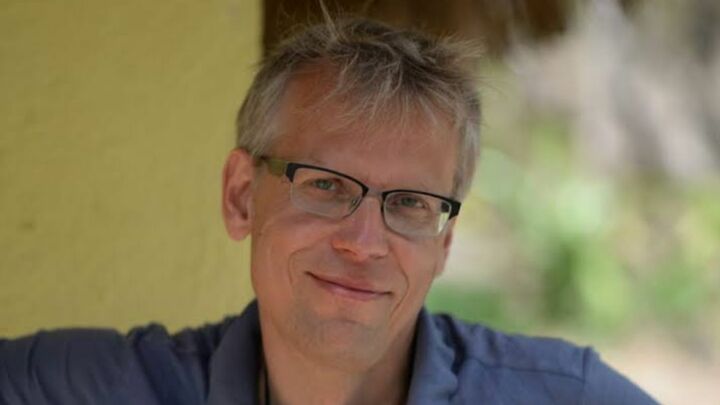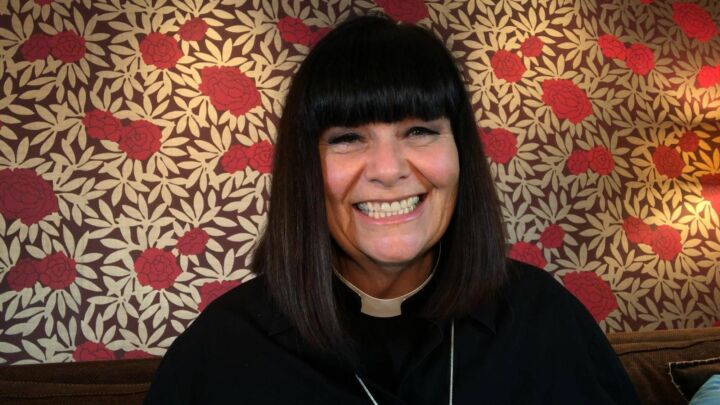The object of art museums
James Cuno, director of London's Courtauld Institute of Art, believes that museums should stick to what they do best rather than trying to be schools or daycare centres.

The unassuming director of London’s Courtauld Institute of Art, James Cuno, will head back to America this summer, leaving behind him something of a ripple in Britain’s cultural pond.
In January his book Whose Muse?: Art museums and the public trust was published in the UK, posing a challenge to current wisdom in the cultural world (1). Whose Muse? is based on a series of lectures given by a group of museum directors when Cuno was head of Harvard University Art Museums, back in 2001-2. These directors argued that the encounter with paintings is the most valuable thing that museums have to offer society, and that art should be put back at the centre of museums. ‘We wanted to say some of the things that weren’t being said, as a potential corrective’, Cuno tells me.
Over the past 10 to 15 years, the face of museums has changed beyond recognition. Out has gone the focus on the collection, study and display of artefacts. Instead, we’ve seen museums reinvent themselves as social missionaries, getting involved in building communities, improving mental health and educating children. Other museums have reposed themselves as businesses, developing a ‘brand’ and working to give the ‘customers’ what they want. Rows of stuffed animals have been replaced by interactive machines, and scholarship has given way to outreach work.
Sitting in his office at the Courtauld Institute, Cuno reflects on the changes that have led museums to this pass. In both the USA and the UK, he said, there was a growing ‘distrust of the arts’ – ‘a sense that the arts are non-quantifiable, and that one can only be suspicious of their value if you can’t quantify it’. The idea of paintings’ intrinsic aesthetic value went out of the window; instead, museums tried to measure all the stuff that went on around the painting, such as the number of visitors it attracted, or the effect it had on children’s test scores. ‘Rather than teaching visitors about art, the focus was on how that could be turned to some other value, which was judged to be of greater importance.’
These changes have worked out in slightly different ways in the UK and USA. In the UK, the government has played a much bigger role in forcing through this new approach to culture – in part because, while central government funding is important for large UK cultural institutions, it is private donors that provide the main sustenance for US museums. ‘I feel the government engineering of social and cultural life more here’, says Cuno, ‘the USA is much more decentralised, with power devolved to states’. So while the UK Department for Culture, Media and Sport (DCMS) sets out in minute detail how cultural institutions should fulfil social inclusion policy, the US government affects culture more indirectly, through manipulation of the tax and legal system.
Another difference was that, in the USA, art got more of a bashing from the Right in the Culture Wars. ‘At some exhibitions, artists’ work was judged to be anti-American or pornographic. You had performance artists smearing their bodies with HIV-tainted blood.’ This led to a questioning of the value of art – and the demand that museums do something useful, instead of ‘doing this stuff with naked people and blood and chocolate’. In the UK, by contrast, shock art has been received with some indulgence – Saatchi’s Sensation exhibition caused much less fuss in London than it did in New York. Here museums have come under more assault from the cultural Left, which accused them of being elitist and irrelevant to ordinary people.
One of the most interesting points in Whose Muse? is that institutions best serve their public when they remain faithful to their own mission, be it making sick people well, educating kids, or collecting and displaying artefacts and art. ‘An institution does best what others don’t do – it contributes uniquely to the culture on those terms. So museums can supplement education, but the classroom has proved to be the best way of educating people.’ It seems that today’s museums would rather be anything but museums – they run like crazy from their old objects, trying to be hospitals, schools or daycare centres. But they have neither the training nor the resources to solve these kinds of social problems. ‘Museums are saying: “we can keep children off drugs, we can improve test scores”’, says Cuno: ‘When that doesn’t happen, what have you got left?’ Once they’ve abandoned their mission, ‘museums are left with no justification’.
He argues that there is a public demand for what only museums can provide. ‘People want to have powerful, beautiful or rare works of art to look at. That is why we have had museums for 200 years, because there is a value in access to these things.’ If museums dance around, trying to get the public’s attention and draw them in any which way, this is more likely to breed alienation than support. ‘We have to trust the public as smart and curious and interesting people, and not patronise them. They want to be challenged.’
It is Cuno’s description of the encounter with the object that is most inspiring. He criticises the current view that people need to ‘see themselves and their identities in works of art’; to see others who ‘look like them, and come from the same culture’. Instead, he argues that museums are supposed to do the opposite: ‘not to affirm individuals’ narrow, parochial view of themselves, but to expand their view of themselves as part of a larger universe.’ He argues that authentic objects have an incredible power – as the remnants of another society, with a worldview and way of life so different from our own, they force us to step outside of everyday practical concerns. ‘We have a connection with these makers, who think so differently from us, and we find ourselves part of this great unfolding of the human story.’
But there is also a conservative undercurrent here. Behind Cuno’s view of the object is a kind of humility, an idea that we are but the guardians and preservers of things, and should accept our limitations in the here and now. ‘It is our job to protect something else, not to protect ourselves’, he says. He seems to see the artefact as possessed with a power that we can only partially understand – he criticises discursive exhibitions for assuming that ‘the object has no voice’ of its own, making artefacts into ‘illustrations of a thesis’ rather than ‘objects in themselves’. He emphasises museums’ ‘tremendous responsibility’ to acquire things for the sake of succeeding generations, a responsibility that he likens to caring for endangered species. This views today’s society as more a steward of tradition, than an actor in its own right.
For me, the British Museum’s record of past human societies – from Neolithic times, through Egypt, Greece and Rome, each building upon the artistic and technological achievements of its forebears – is as much a call to seize the present moment as it is to become guardians of tradition. We should use and interpret museum objects as we see fit – not recklessly, but in the best way possible, in accordance with our own ends and goals.
But perhaps a bit of conservatism is no bad thing for a museum director today. One of the social missionary museum directors, David Fleming from Tyne and Wear Museums, has said that he went into museums as a way of ‘trying to change the world’. As a result, the people of Tyne and Wear have ended up with an endless stream of social initiatives and therapy sessions, instead of decent art exhibitions. It would be better if museum directors concentrated on looking after the galleries, and left changing the world to the people.
Josie Appleton is author of Museums for “The People”?, published by the Institute of Ideas.
Read on:
spiked-issue: Museums and Galleries
(1) Whose Muse?: Art Museums and the Public Trust, (ed) James Cuno, February 2004 (buy this book from Amazon UK or Amazon USA).
To enquire about republishing spiked’s content, a right to reply or to request a correction, please contact the managing editor, Viv Regan.







Comments
Want to join the conversation?
Only spiked supporters and patrons, who donate regularly to us, can comment on our articles.